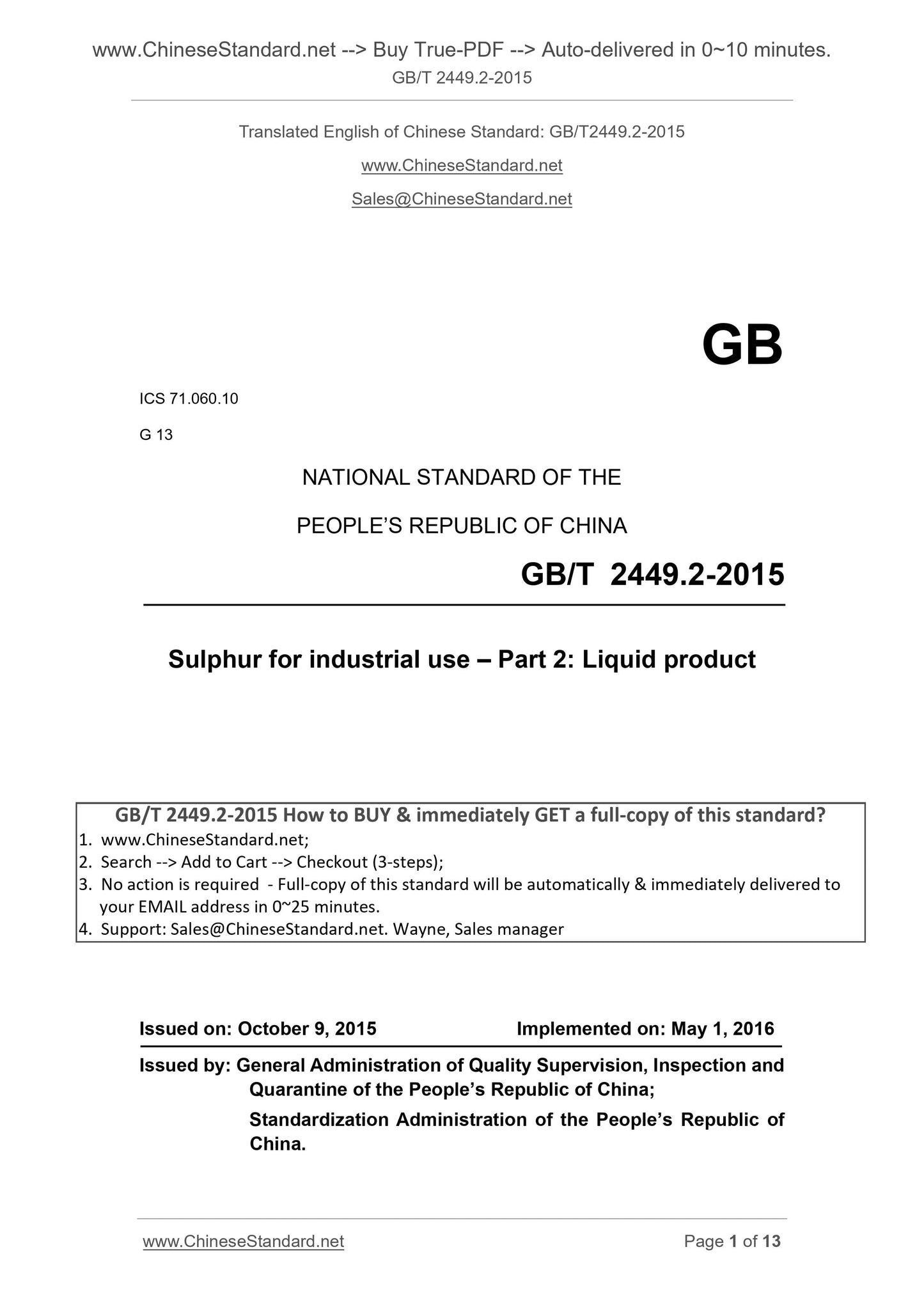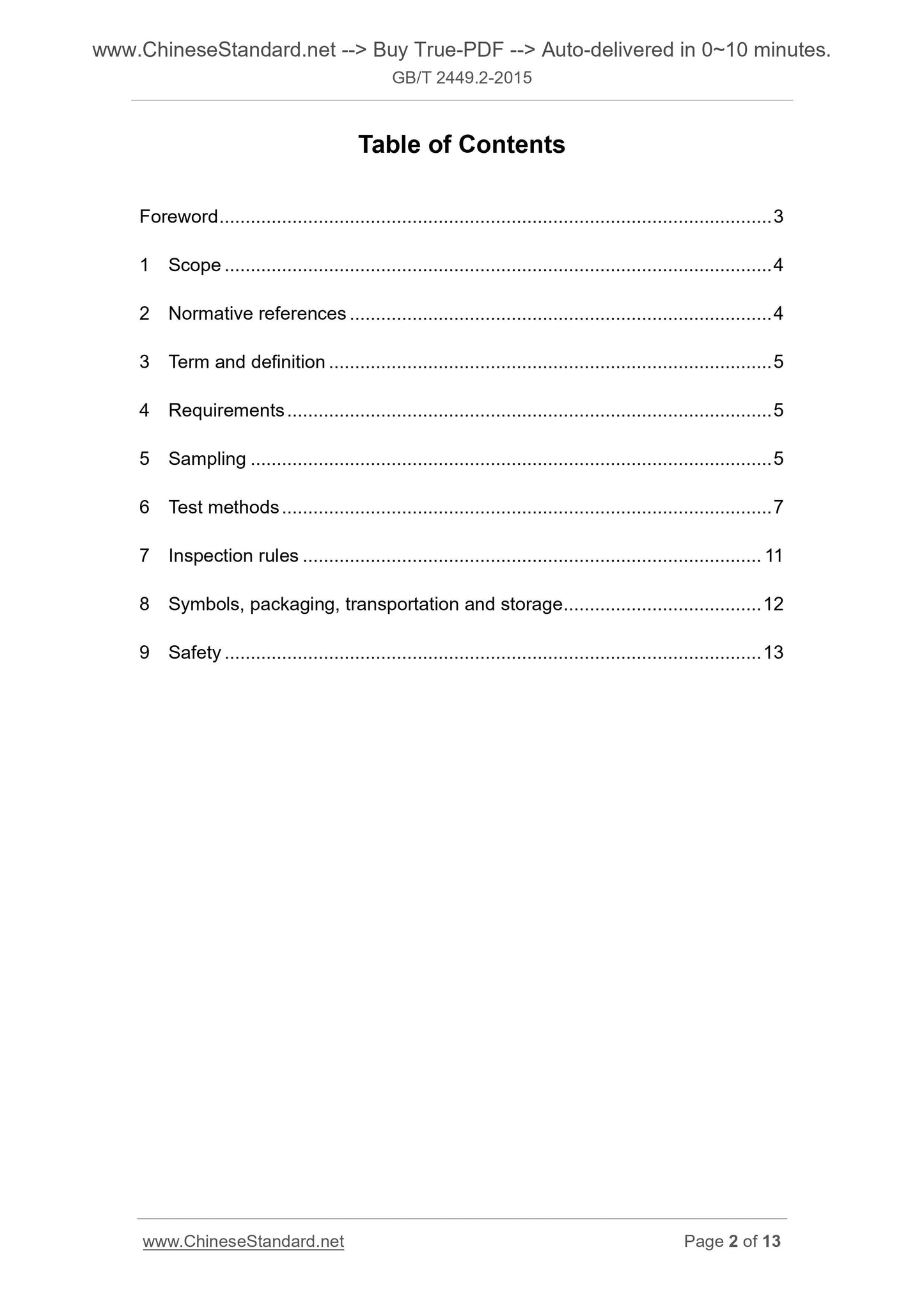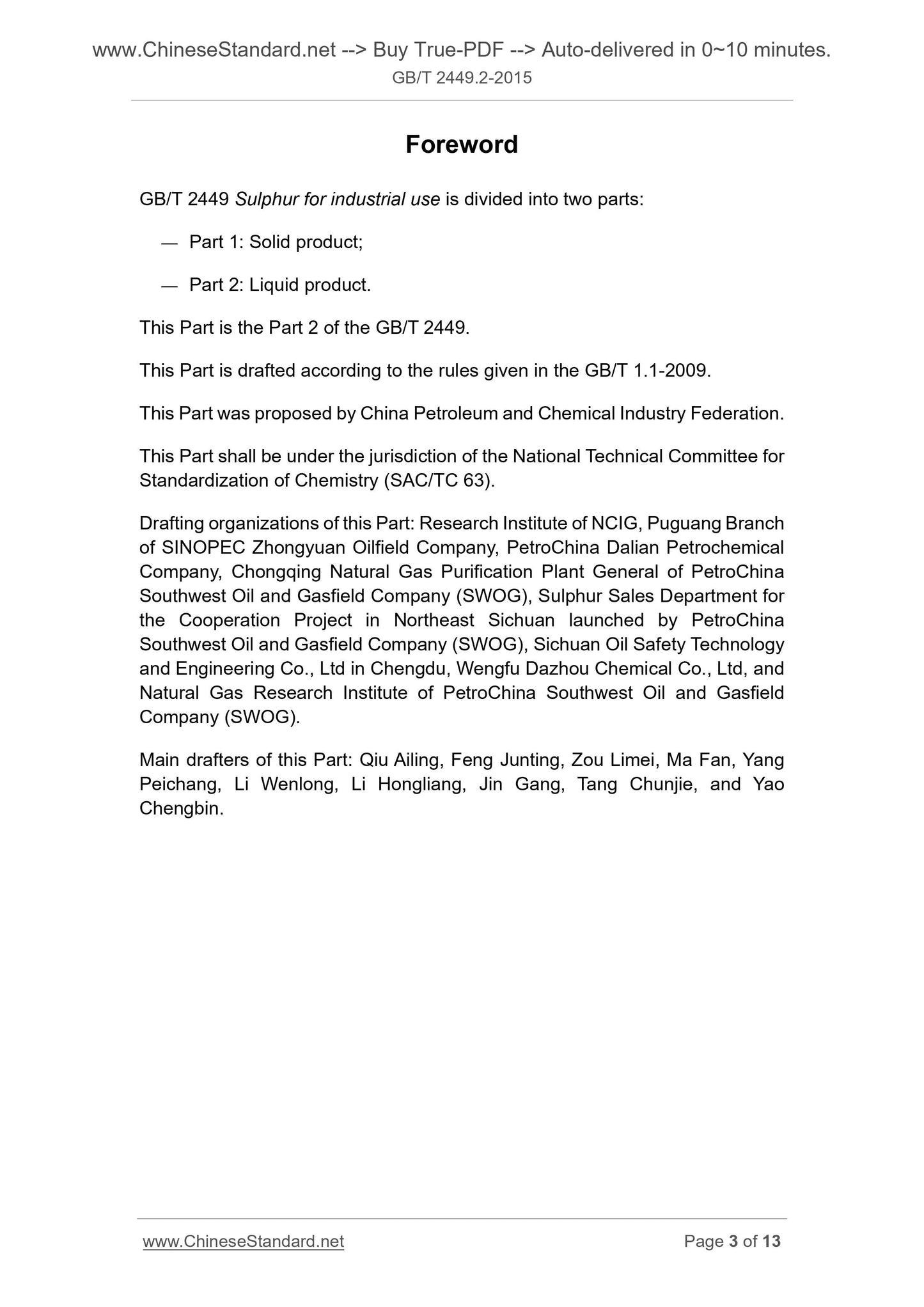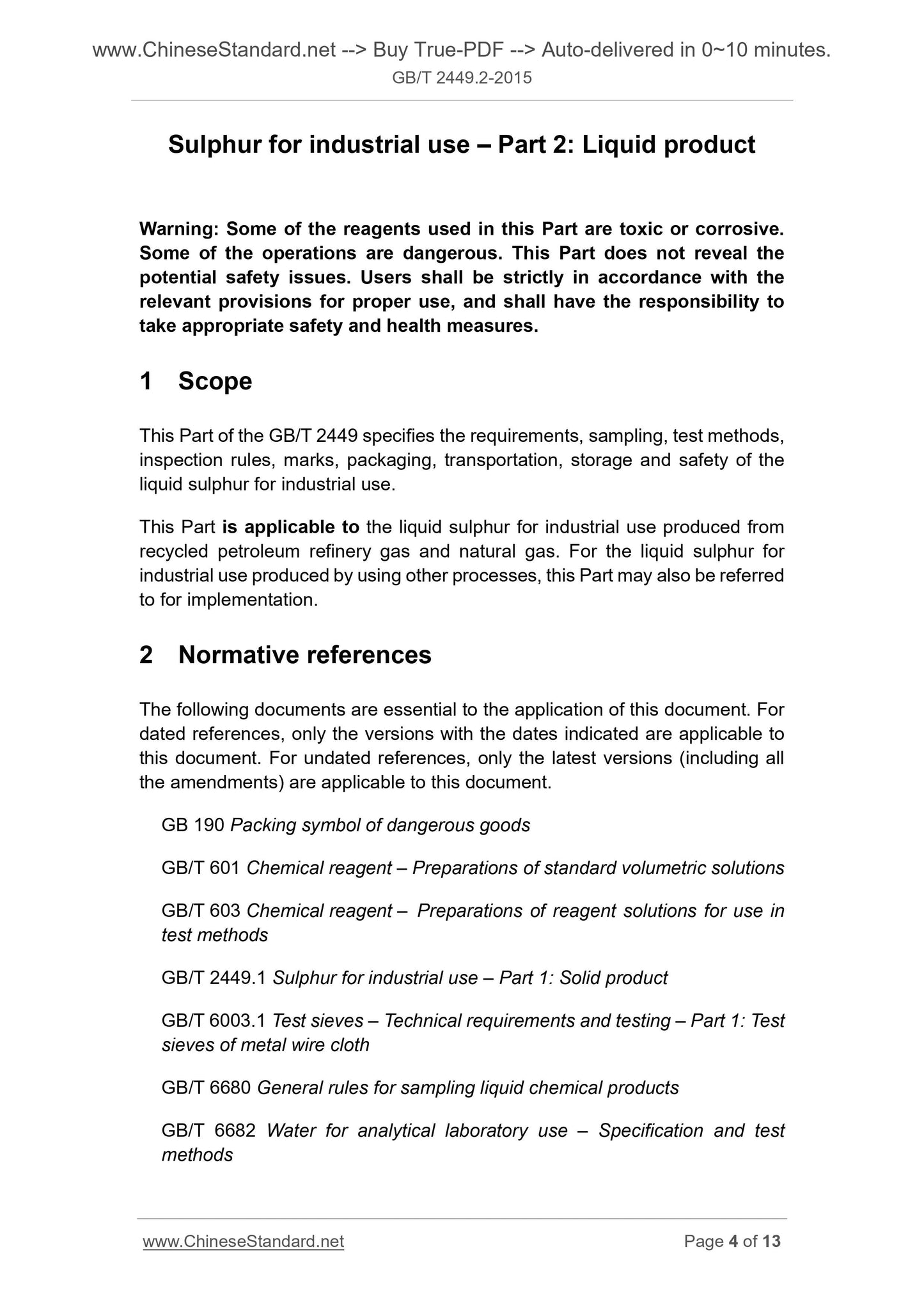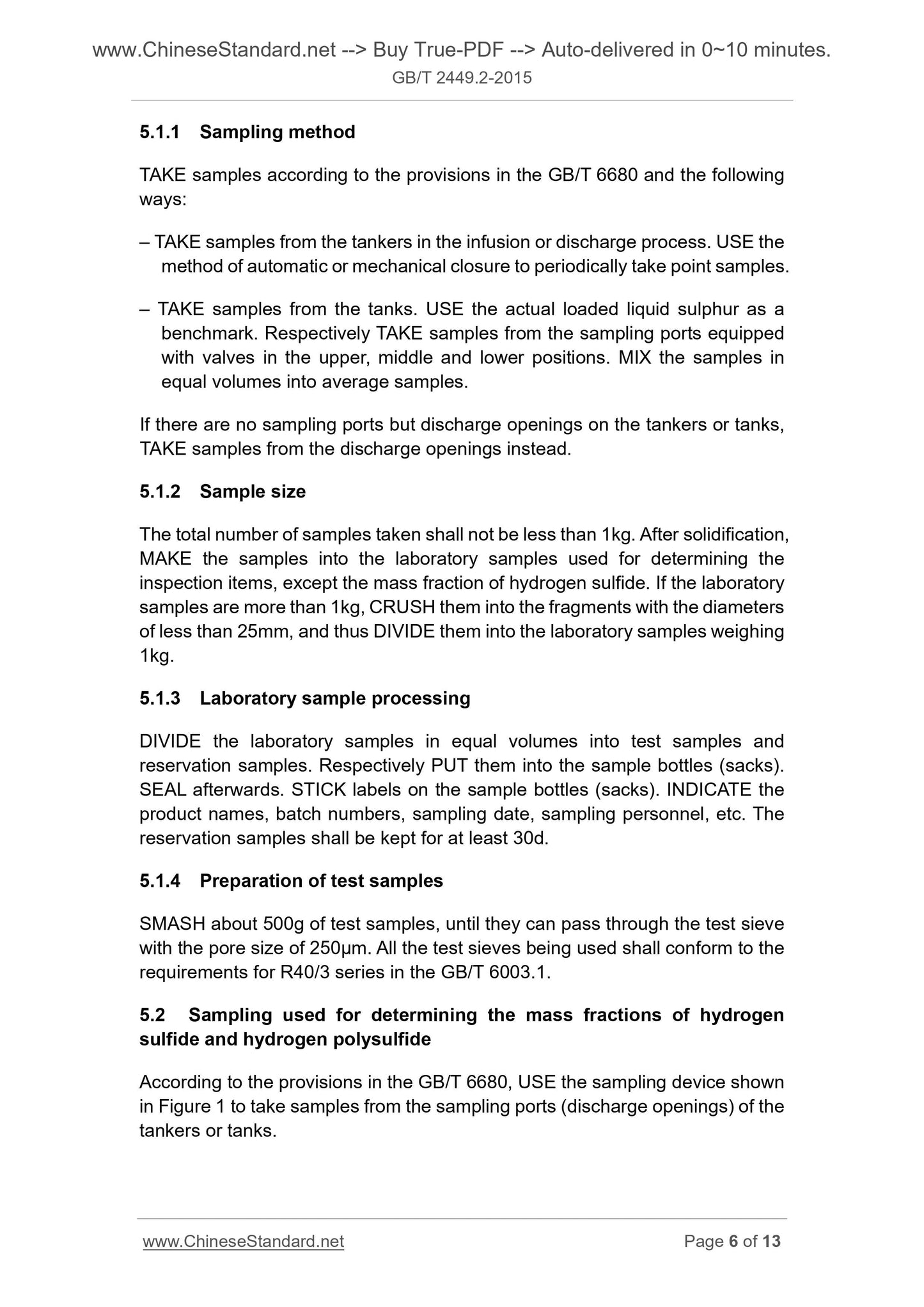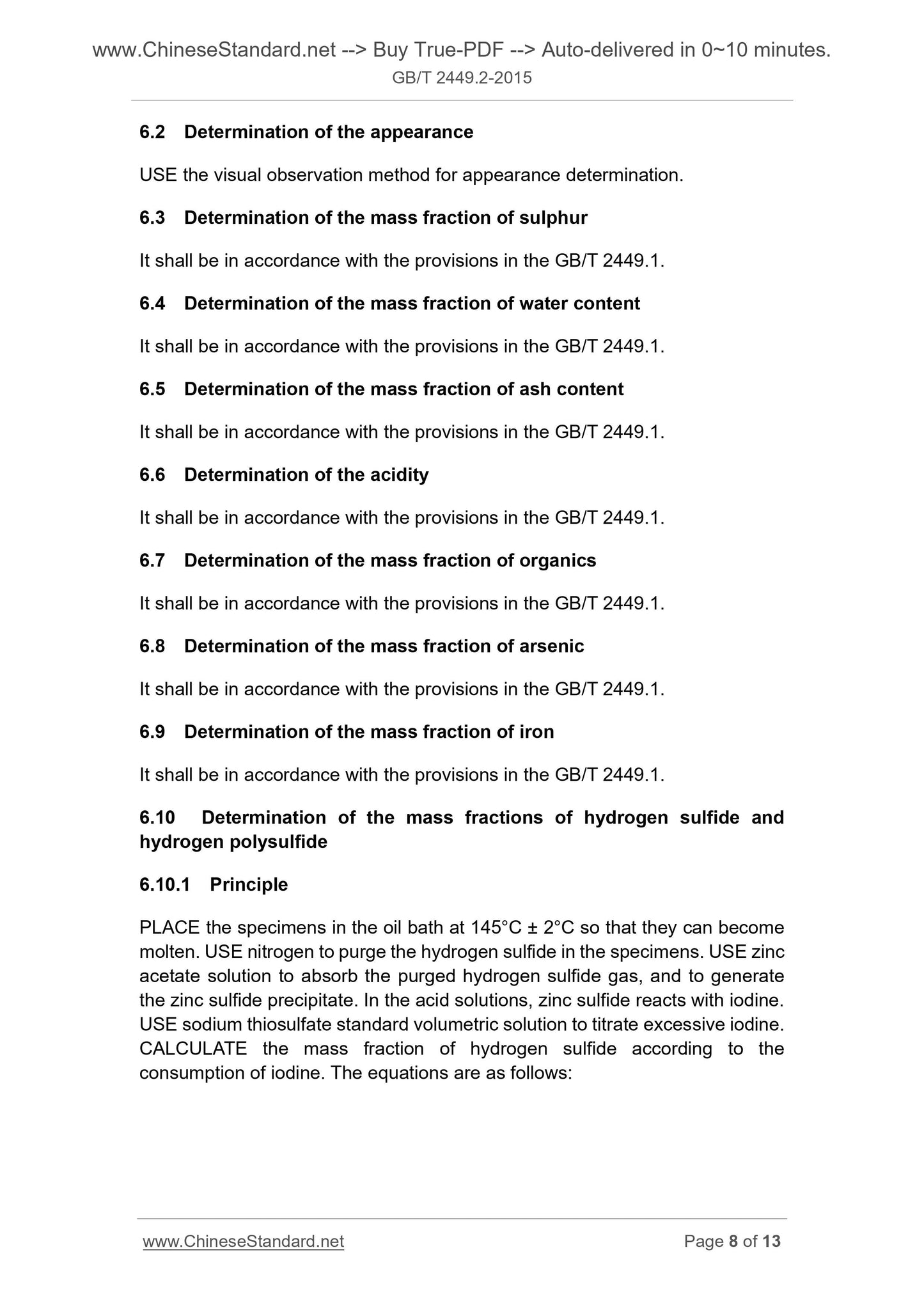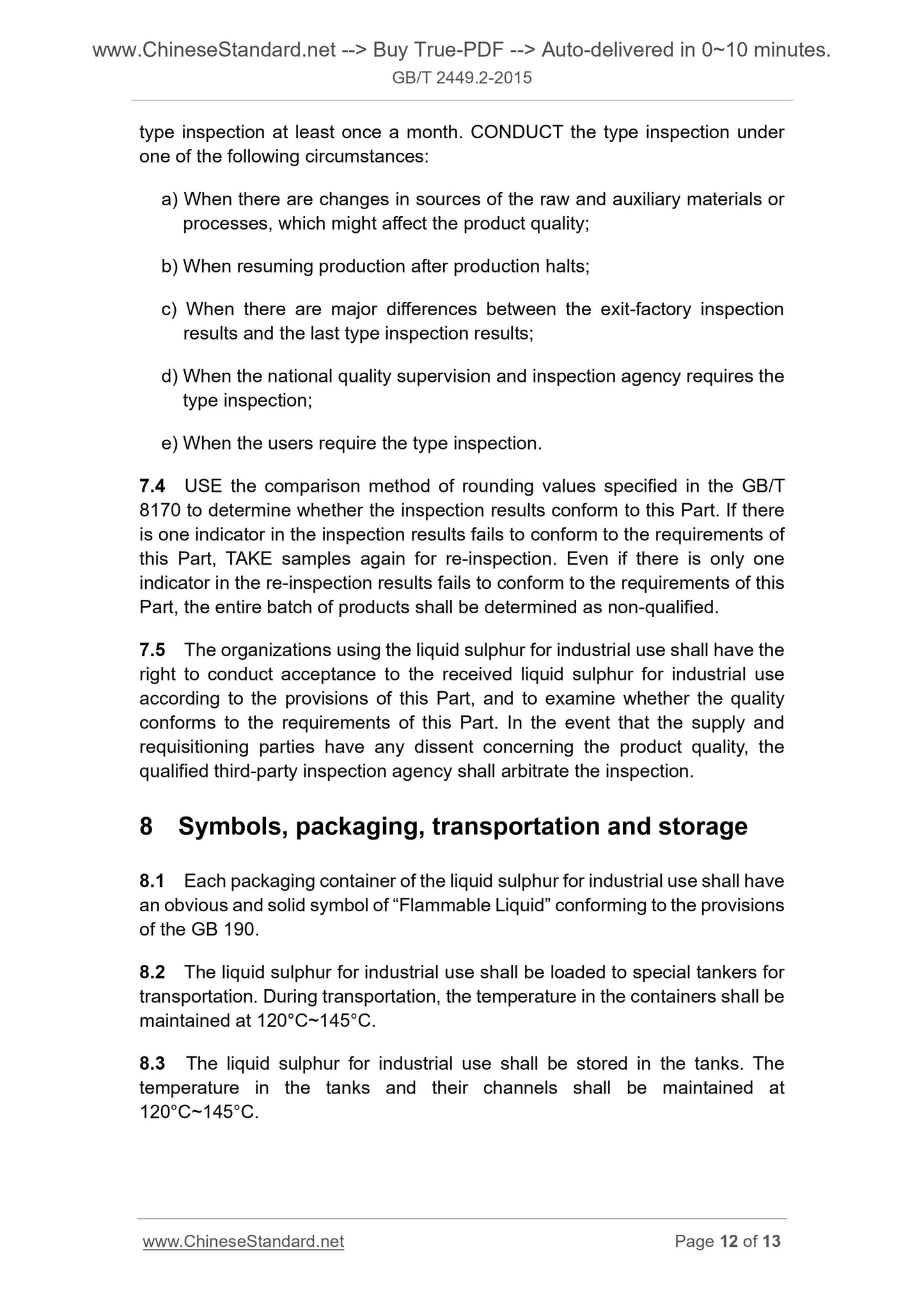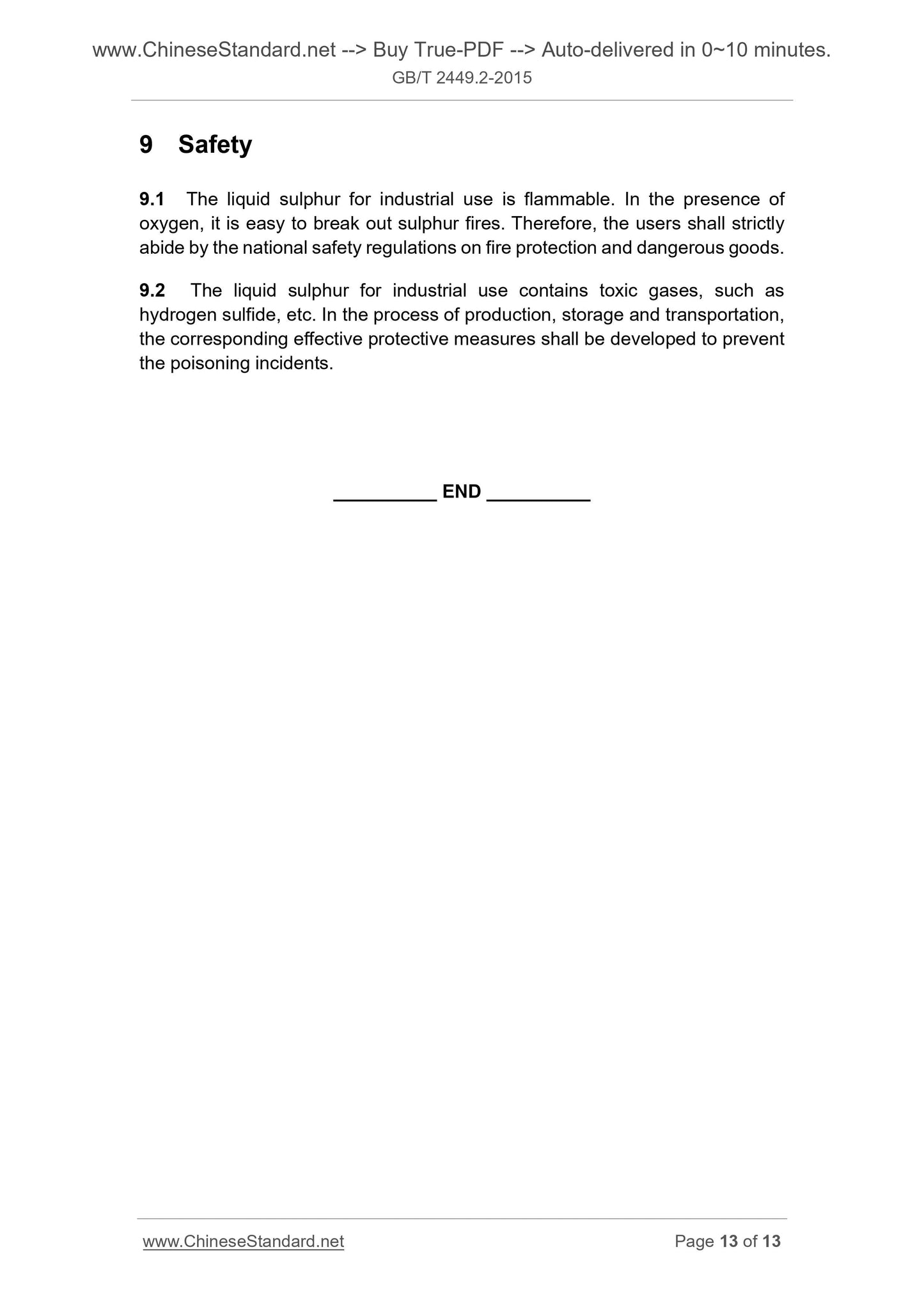1
/
of
8
www.ChineseStandard.us -- Field Test Asia Pte. Ltd.
GB/T 2449.2-2015 English PDF (GB/T2449.2-2015)
GB/T 2449.2-2015 English PDF (GB/T2449.2-2015)
Regular price
$90.00
Regular price
Sale price
$90.00
Unit price
/
per
Shipping calculated at checkout.
Couldn't load pickup availability
GB/T 2449.2-2015: Sulphur for industrial use - Part 2: Liquid product
Delivery: 9 seconds. Download (and Email) true-PDF + Invoice.Get Quotation: Click GB/T 2449.2-2015 (Self-service in 1-minute)
Newer / historical versions: GB/T 2449.2-2015
Preview True-PDF
Scope
This Part of the GB/T 2449 specifies the requirements, sampling, test methods,inspection rules, marks, packaging, transportation, storage and safety of the
liquid sulphur for industrial use.
This Part is applicable to the liquid sulphur for industrial use produced from
recycled petroleum refinery gas and natural gas. For the liquid sulphur for
industrial use produced by using other processes, this Part may also be referred
to for implementation.
Basic Data
| Standard ID | GB/T 2449.2-2015 (GB/T2449.2-2015) |
| Description (Translated English) | Sulphur for industrial use - Part 2: Liquid product |
| Sector / Industry | National Standard (Recommended) |
| Classification of Chinese Standard | G13 |
| Classification of International Standard | 71.060.10 |
| Word Count Estimation | 9,924 |
| Date of Issue | 2015-10-09 |
| Date of Implementation | 2016-05-01 |
| Quoted Standard | GB 190; GB/T 601; GB/T 603; GB/T 2449.1; GB/T 6003.1; GB/T 6680; GB/T 6682; GB/T 8170 |
| Regulation (derived from) | National Standard Announcement 2015 No.31 |
| Issuing agency(ies) | General Administration of Quality Supervision, Inspection and Quarantine of the People's Republic of China, Standardization Administration of the People's Republic of China |
| Summary | This Standard specifies the requirements for liquid industrial sulfur, sampling, test methods, inspection rules and signs, packaging, transportation, storage, and security. This Standard applies to industrial recovery obtained liquid sulfur from petroleum refinery gas, natural gas, other industrial process to produce liquid sulfur may also refer to the implementation of this standard. |
Share
